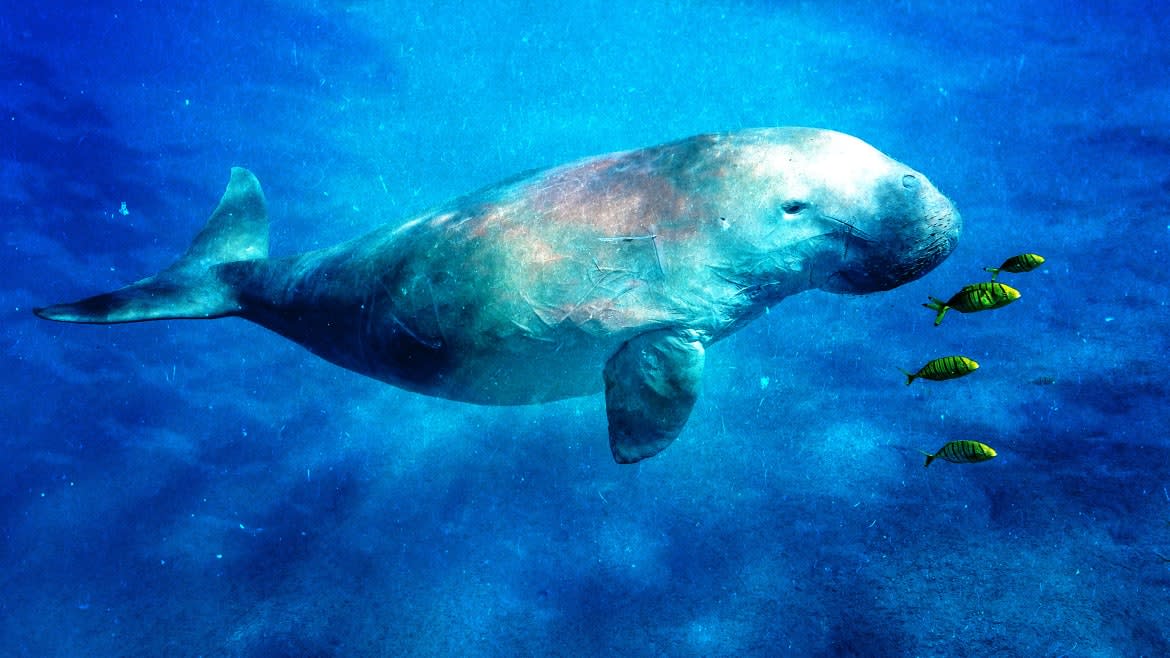
Once upon a time, dugongs swam without disturbance throughout the seas of southern China. However, a report published this week in the journal Royal Society Open Science claims that hunting, habitat loss, collisions with ships, and other human interventions have rendered these once-abundant marine animals “functionally extinct” in China.
Dugongs (Dugong dugon) are huge mammals that spend most of their time feeding on underwater seagrass, where they can weigh up to 800 pounds and grow to a length of 10 feet. Dugongs, sometimes known as “sea cows,” are closely related to manatees, another large, fatty marine animal, despite being the sole surviving member of the Dugongidae family. (The two species have many physical characteristics, but may be distinguished by their noses and tails: dugongs have wider, trunk-like snouts and fluke tails that are similar to those of dolphins.)
Dugongs have a slow reproductive rate, making it more difficult for their populations to recover from setbacks, despite the fact that they can live up to 70 years old. Not having enough seagrass to consume can prevent dugongs from reproducing. In addition, dugong numbers may decline if seagrass habitats decrease.
IUCN classifies dugongs as “vulnerable” worldwide; the Chinese government has designated them as “Grade 1 National Key Protected Animal,” the country’s highest level of protection, since 1988. The paper’s authors note that the “poorly understood” status of dugongs in Chinese waters prompted them to conduct the study.
They spoke with hundreds of commercial fishermen in four southern maritime provinces (Hainan, Guangxi, Guangdong, and Fujian), covering the entire range of dugong habitat off the coast of China. They looked at all documents that existed throughout the twentieth century and up to the present day.
The interviews with the veteran fishermen showed a bleak picture: only 5% of the 788 people who had participated in the study and had fished for an average of 25 years had ever seen a dugong.
In the last five years, only three of the fishermen had seen the species. The study concluded that two of the sightings were in locations far from the historical range of dugongs in China, suggesting that the creatures were “vagrant individuals” from the dugong population in the Philippines.
The study also revealed that there have been no independently confirmed field observations made since the year 2000. The dugong population looked to start drastically declining in the mid-1970s.
The study’s authors conclude that dugongs are the first big vertebrate to vanish from Chinese seas.
“Kristina Gjerde, an IUCN policy adviser, tells the BBC’s Esme Stallard that the dugong is a sad example of what is happening to the maritime environment when there is increasing encroachment of human activity.
Although the animals can still be found off the coasts of 37 different countries, spanning from East Africa to the western Pacific, the loss of these populations in China serves as a “sobering reminder that extinctions can occur before effective conservation actions are developed,” as the researchers put it.
However much effort China put into restoring seagrass, the dugong was still lost. Researchers have advised countries bordering the South China Sea to adopt “urgent and drastic steps” to stop the loss of marine life.
It is a tragedy that the dugong is probably no longer found in China “says Samuel Turvey, co-author and researcher at the Institute of Zoology, Zoological Society of London. “Their loss will have a domino impact on ecosystem function, and it will also serve as a wake-up call.”



